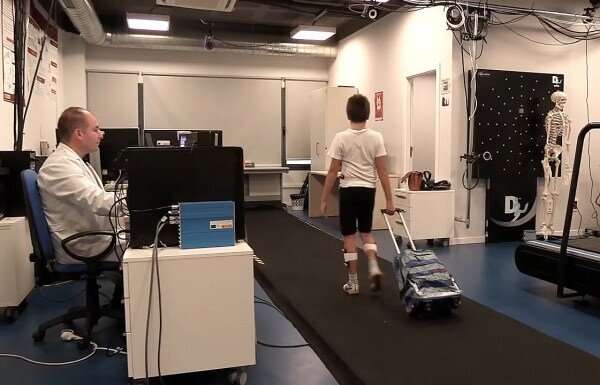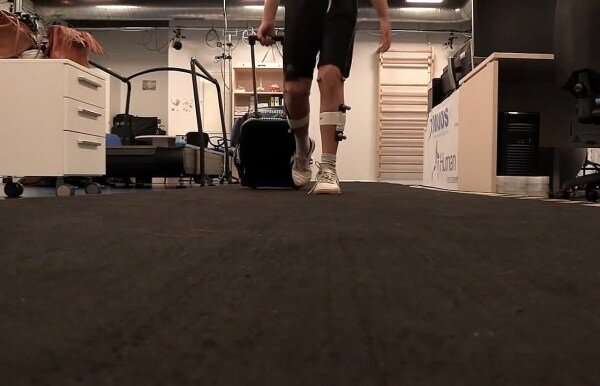Researchers identify maximum weight children should carry in school backpacks

Researchers from the University of Granada (UGR) and UK-based Liverpool John Moores University have determined for the first time the maximum weight a child should carry using a school backpack trolley: a maximum of 20% of their body weight.
In an article published in the prestigious Applied Ergonomics journal, ranked second in the Ergonomics area of Journal Citation Reports, the scientists describe how they have established—in a worldwide first—recommendations on the appropriate load that primary school-age children should carry when using a backpack trolley.
To date, weight recommendations have been established for ordinary school backpacks, as they are the most widely used type in the school context worldwide. However, in Spain, more than 40% of children use backpacks on wheeled trolleys, and until now there have been no studies making weight recommendations for this type of backpack.
This research was conducted via a collaborative project involving researchers from the UGR (the Department of Physical Education and Sports and the Laboratory for the Analysis of Movement and Human Behaviour, Ceuta campus, or HubemaLab) and from Liverpool John Moores University.
Study focuses on Primary School pupils
In this study, 49 primary school pupils were assessed. A kinematic analysis of the children (posture of the trunk and lower limbs) was conducted while (i) they walked freely, carrying no weight, (ii) carrying a traditional backpack, and finally (iii) pulling a backpack trolley with different loads (10%, 15%, and 20% of their respective body weights).

For the analysis, a three-dimensional optical motion capture system was used, similar to those used in animation films and video games. In collaboration with the researchers from Liverpool John Moore University, the UGR researchers used statistical techniques to analyse the full kinematics curves, based on tracing point trajectories.
The main findings of the study indicate that the greatest alterations when using trolleys or backpacks are produced in the proximal extremities (hip and trunk), while there is little difference in the kinematics of the distal extremities (knee and ankle). However, pulling the backpack trolley produces fewer changes in the child's kinematics and, therefore, resembles more closely their movement when walking free of any load, compared to carrying the backpack, even when it weighs very little.
As an overall conclusion, the study corroborates that schoolchildren who use backpacks should avoid carrying loads greater than 10% of their body weight. Furthermore, in a new finding, when pulling a school backpack trolley, the child should avoid carrying any load greater than 20% of their body weight.
More information: E. Orantes-Gonzalez et al, A kinematic comparison of gait with a backpack versus a trolley for load carriage in children, Applied Ergonomics (2019). DOI: 10.1016/j.apergo.2019.05.003



















